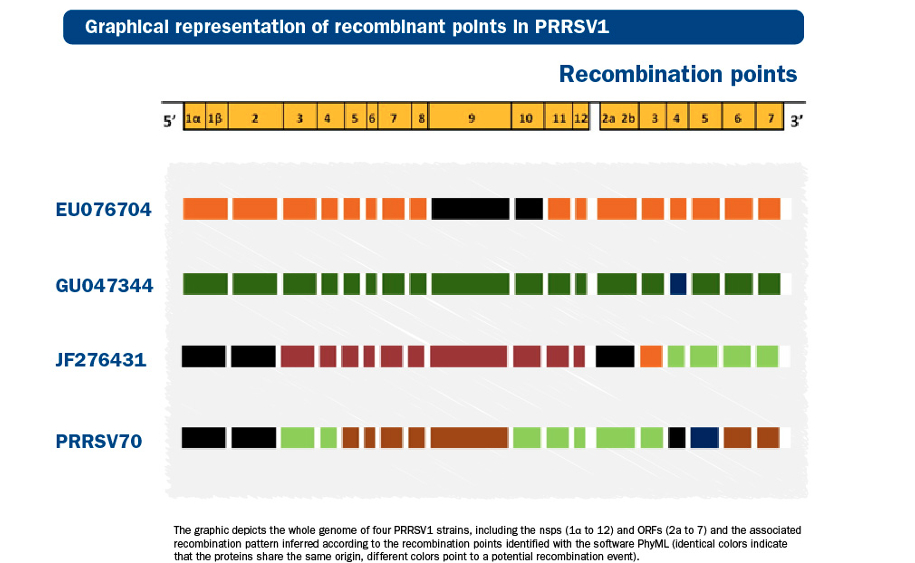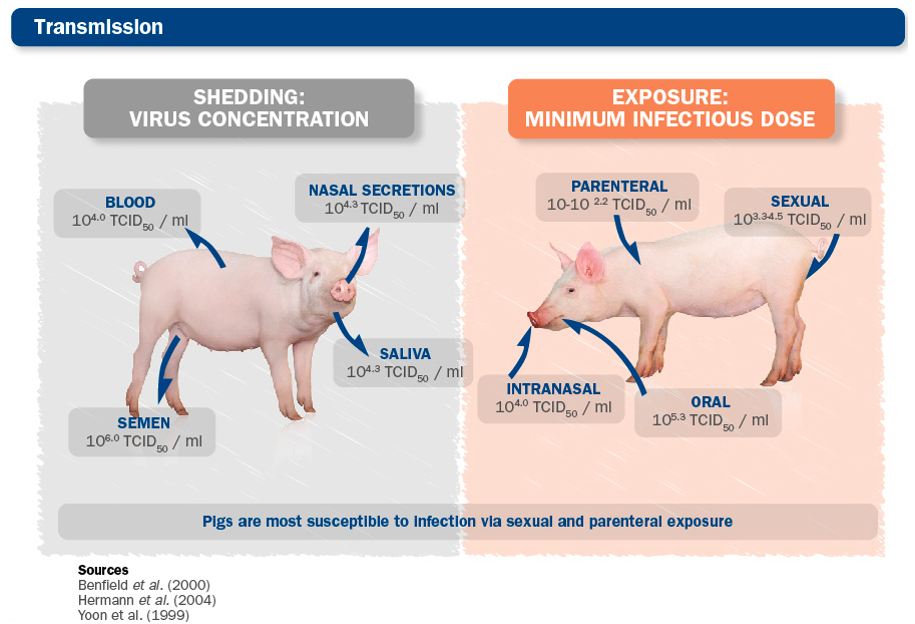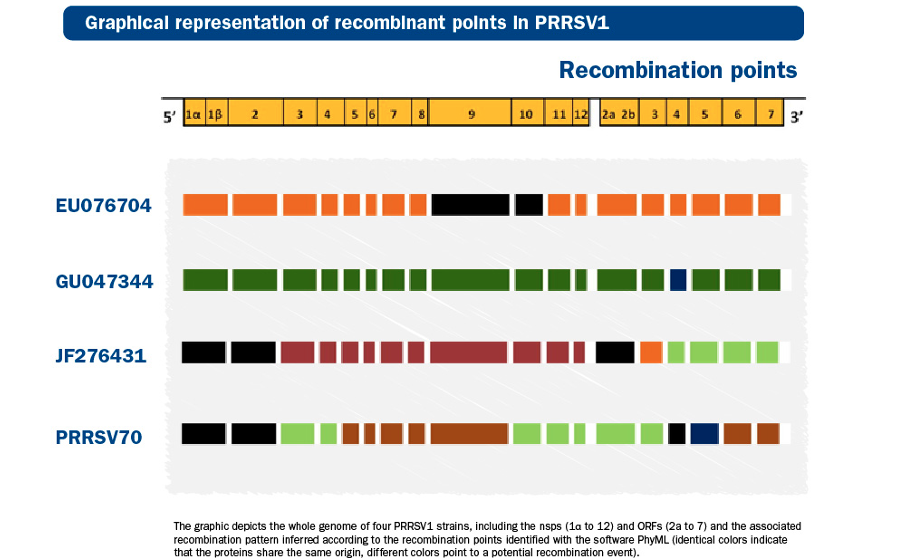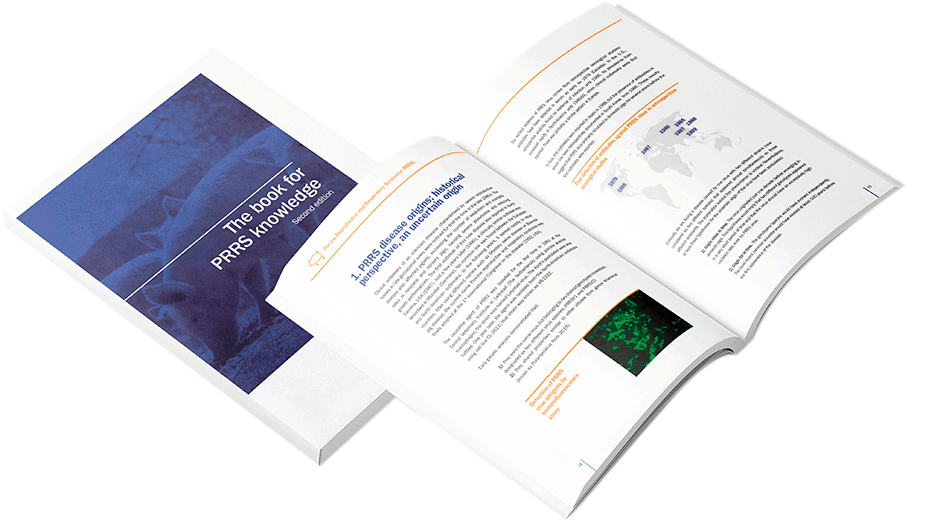Recently we switched to another commercial PRRS live vaccine for mass vaccination on our farm. Which points should we carefully check to compare the safety of PRRS vaccines?
In regards to the safety of PRRS vaccines, there are two major issues that we should monitor after vaccination.
1. Adverse reactions after PRRS vaccination
Safety concerning local and systemic reactions after using PRRS vaccines, such as fever or a local reaction (inflammation, swelling). Most PRRS live vaccines cause almost no reactions because they have a diluent and not an adjuvant, so they cause minor reactions after inoculation.
2. Safety related the use of a PRRS live vaccine different from the field virus
The PRRS vaccine virus is live but attenuated, which means that in terms of safety we should look at 3 issues:
· Duration of viral excretion
· Possible recombination with existing virus circulating on the farm
· Possible (but very unlikely) reversion to virulence of the vaccine virus
2.1 Virus excretion in PRRS live vaccines
Concerning the duration of viral excretion, usually attenuated vaccines have a much lower excretion time than the field virus, so we can expect less than 12 weeks of excretion after vaccination, usually much less.
To measure viral excretion after vaccination we use PCR and virus sequencing to detect the presence of the PRRS vaccine virus after 12 weeks in susceptible animals, for example in nursery piglets.
If you do not find PCR positive animals for the PRRS vaccine virus it is a good indicator of vaccine safety.
Be aware that different vaccines have different excretion times, so you should ask the manufacturer what the expected excretion time for that particular vaccine is.
Note: It is important that you first do a diagnostic PCR and sequencing for the actual virus that is circulating on your farm, in non-vaccinated animals, so that you can compare the sequencing from your field virus with the vaccine virus.
If you do not have this sequencing you can compare the results of the new virus (samples collected after vaccination) with the virus database from the PRRS vaccine supplier to see if it is the same virus.
2.2 Recombination of PRRS live vaccines
Recombination of the vaccine virus and field virus is not very common but it can happen.
To check for this recombination we must do PCR and sequencing on samples from viremic animals with clinical symptoms (animals that have been vaccinated and also exposed to the field virus).
With this sequencing we can check if the virus found is the same as or different from the field virus and vaccine virus.
2.3 Reversion to the virulence of live PRRS vaccines
Concerning possible reversion to virulence, all vaccines (at least in Europe, controlled by the EMA) have safety standards that do not allow for this reversion to occur in the field. So far to my knowledge, there are no reports of PRRS virus vaccines with reversion to virulence.
In the end, as a practitioner I also value, above all, the clinical results of the vaccination, as a standard for vaccine safety.
If you want to know more about PRRS virus transmission within herds and how to quantify PRRS virus transmission, visit our chapter “Epidemiology”
You can ask your own question! Visit Pig333.com and submit your question to the experts.

Universidade Lusófona de Humanidades e Tecnologias – Portugal






